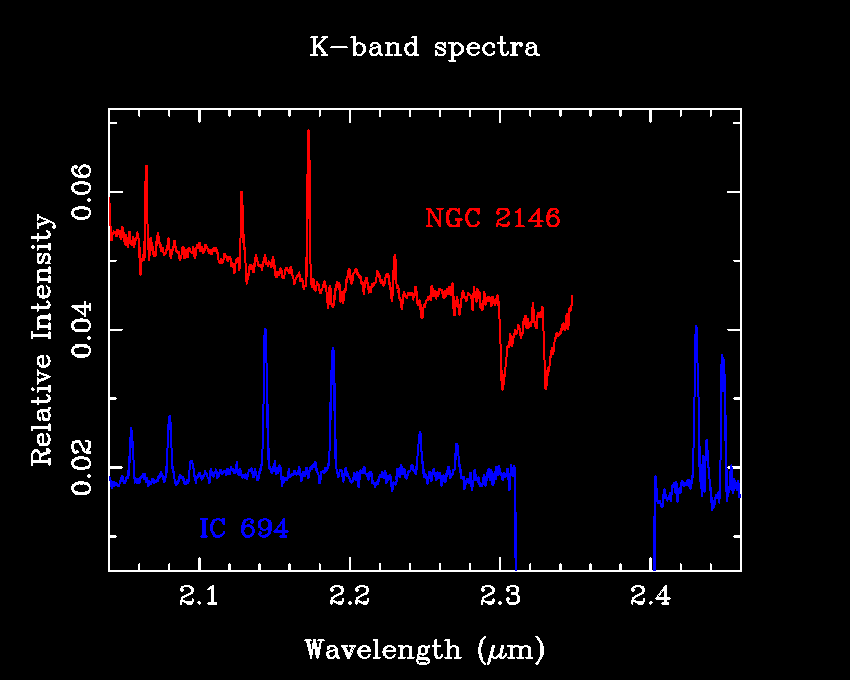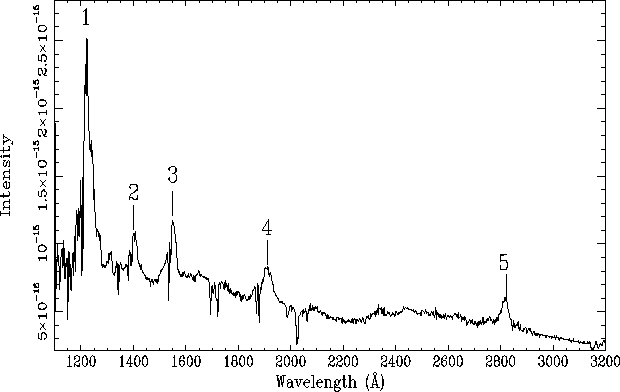
A few examples of astronomical spectra are highlighted here. Some cool Astronomy Camp spectra also live in these pages.
Comets consist of almost pristine material from the early formation of our solar system, unprocessed by harsh solar sunlight. Studying the chemistry of these "dirty snowballs" gives us a clue as to the composition and nature of our solar system in its infancy and constrains theories of how life may have formed on Earth.
A link to radio-wavelength spectroscopy of comets may be found here.
Billions of years ago, when our galaxy took form, it is thought that there must have been an epoch of rapid star-forming activity that has since subsided. We can get clues to how this may have looked by observing galaxies currently exhibiting violent, extreme star-formation. Such "starburst" galaxies are studied best in the infrared and at radio wavelengths, since star-forming galaxies often harbor so much dust and gas that visible light cannot penetrate to the centers where the majority of the star formation is taking place. Below is an infrared (2.0 - 2.5 microns wavelength, or 20,000 - 25,000 Angstroms) spectrum of two such starburst galaxies. Most of the features you see are from molecular hydrogen, H2, the stuff from which stars are made! These molecular hydrogen emission lines tell us that the molecular gas we see is very warm; in the top galaxy, the gas is excited by shock-heated gas. The bottom galaxy has molecular hydrogen excited by ultraviolet light emitted from recently-formed young, hot stars.
The distant nature of quasars were discovered in the early 1960's, when spectral lines were noted to be substantially-shifted redder than they should normally be. This redshift can be attributed to the recession (speeding away) of quasars from us. In the standard Big Bang model of cosmology (the faster it's speeding away from you, the more distant it is), this rapid motion implies that quasars are the most distant objects known. Below is a typical spectrum of a quasar. The wavelength scale has been rescaled to the "appropriate" rest wavelengths for the spectral lines. The most noticeable feature is the broad emission line at 1216 Angstroms due to hydrogen atoms making the transition from the first excited state to the ground state. Although 1216 Angstroms lies deep in the ultraviolet, where the Earth's atmosphere is opaque, many quasars are receding from us so fast, this line is redshifted into the visible part of the spectrum (4000-7000 Angstroms).
